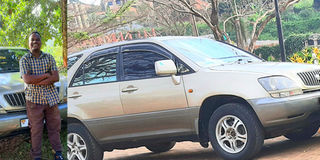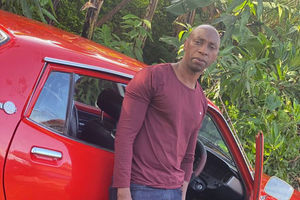
John Yakalemye bought his Toyota Harrier (UAX number plate series) in 2022. When he had just bought the 2000 model car, he noticed that the previous owner had not maintained it well. With the help of a mechanic recommended to him by a friend, one of the things Yakalemye and the mechanic discovered was that the car’s was always driven with low quantities of fuel. The fuel filter was not only clogged with dirt but some parts of the fuel tank had also started to rust.
“The dirt in the fuel filter could have been as a result of dirty fuel or rust from the tank. On top of replacing the fuel filter, I also replaced the gearbox at Shs1.5m. I was given an option of buying an old gearbox at Shs800,000, but I decided to buy a new one. One of the parts I did not replace was the fuel pump,” Yakalemye recalls.
From his experience, Yakalemye advises any prospective first-time car owner who wants to buy a second hand car to expect some mechanical issues.
“People sell used cars for different reasons. Some are well-maintained whileothers are not. It could also be cheaper to buy but keeping it in roadworthy condition will be expensive. Regardless of the state in which it is, get a trusted mechanic or garage to inspect and service the car before you take it on the road. Do not assume anything. It is also better if you test drive the car with the seller over a long distance. It will reveal all that needs to be repaired or replaced,” he adds.
Importance of service
Two years later, Yakalemye services the 2400cc petrol engine Harrier as recommended in the service manual. Because he is a regular long-distance traveller, plying the Kampala to Busia route, sometimes Yakalemye carries out service before the recommended mileage, simply to have it in the best mechanical condition.
“There are service routines that do not wait. This could be scratches, dents, broken lights, stolen side mirrors or a flat tyre. Sometimes I detect mechanical faults in the car depending on the noise it produces. For instance, when there is a squeaking sound, it is a sign of a fault in the suspension system. When the brakes are making noise during braking, it is a sign the brake pads need replacement. The secret to maintaining old cars is simple- don’t wait for the car to break down to visit the garage,” he says.
On average, Yakalemye spends Shs200,000 on minor services, something that normally takes about four to six months. From Kampala to Busia, he refuels with Shs200,000. When returning to Kampala, he tops up with Shs100,000. However, a full tank costs approximately Shs360,000 and this will take him from Kampala to Busia and back to Kampala. Even then, he will be left with enough fuel for city rounds for approximately one week.
Performance
Though it is not the best mid-size sport utility vehicle, Yakalemye says his Harrier is not only comfortable but also suitable for rough upcountry off-road performance.
“I have driven it on many rough upcountry roads but I have never got stuck. I intend to restore it to the initial 4WD system for optimal performance,” he concludes.
Advice to prospective car buyers
Edwin Jjuuko, a mechanic, advises that when buying a used car, not necessarily those sold in the bond, you must pay attention to its mechanical condition and not the number plate of the car. Car looks or number plates, he argues, are deceptive.
“There are many incidents where cars bought from bonds are in worse mechanical conditions compared to those already on the road. Those after new number plates sometimes regret the mistakes they made by selling off their older cars for those with new number plates in the bond. They realise later that it would have been better if they kept and maintained their old cars,” Jjuuko explains.
This is the reason you will find someone who bought a car at, for example, Shs60m in a bond and is selling it off at Shs30m after a short time because it did not either meet their expectations or the cost of maintenance was high, especially with fuelling. Sometimes, the cost of spare parts is also a nightmare, especially for people who buy cars out of peer pressure.
Generations
First Generation (1997 - 2003)
The first generation of the Toyota Harrier went on sale in Japan in December 1997. The Harrier remained relatively unchanged throughout the first generation except for an engine update and a special edition being offered.
Second Generation (2003 - 2013)
The second generation of the Toyota Harrier went on sale in Japan in February of 2003. Available trim packages include the 240G, 240G L, 240 G Premium, 240 L, and 240 L Premium for the base models. The V6 units have the same trim packages available but are distinguished by using the 300 designation in place of the 240. Models equipped with air suspension are simply badged as AIRS.
Third Generation (2013 - present)
In 2008, Toyota began selling its Lexus nameplate in Japan. As a result, the Toyota Harrier became its marque. The third generation is built on the New MC chassis, similar to that used in the RAV4. The chassis update did not bring a significant change in size from the second generation.




